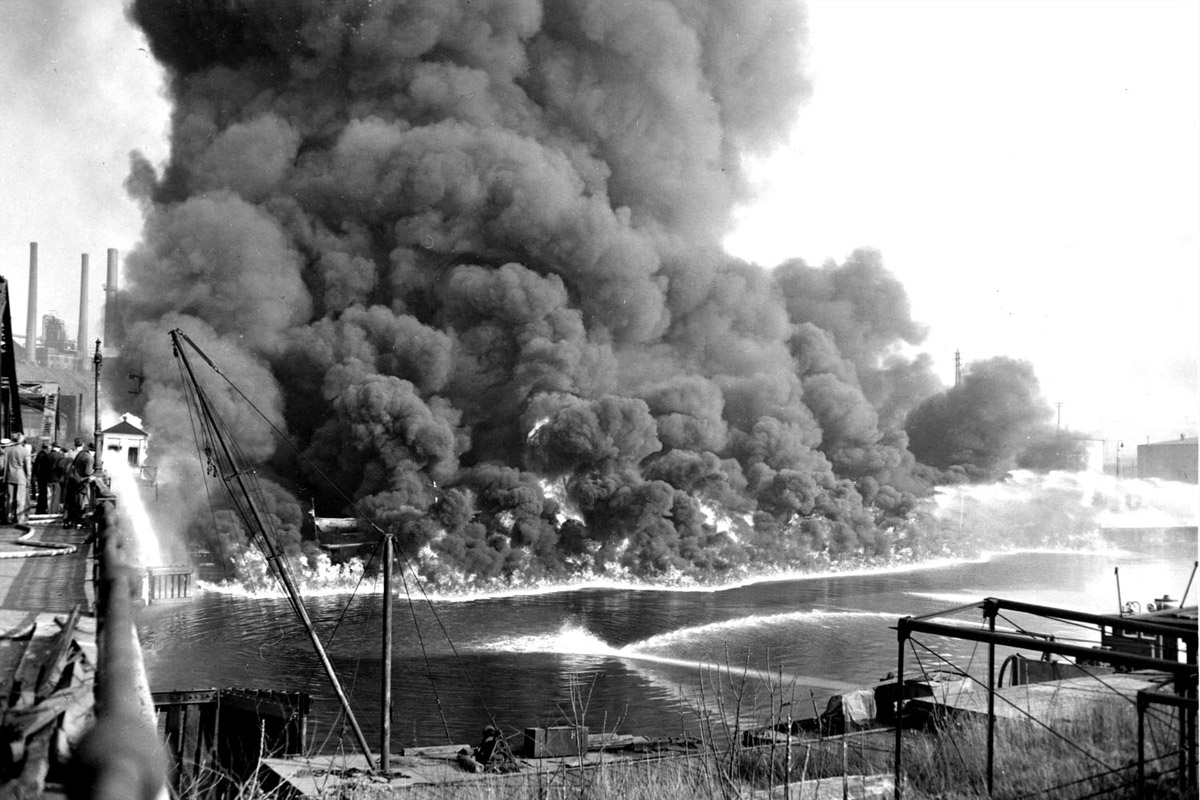
By Susan J. Sullivan
1972. Some of you were children, others were environmental advocates and college students, and many not even born. Yet 1972 was the year one of the most important pieces of legislation was enacted by the United States Congress and signed into law by the president. The Clean Water Act (CWA), also known as Federal Water Pollution Control Act Amendments of 1972, was authorized to restore and maintain clean and healthy waters.
Before the CWA, water quality in significant portions of the United States was reprehensible; filthy, un-swimmable, toxic. Rivers and streams ran different colors every day. The Hudson River contained bacteria levels of 170 times the safe limit. In 1984, the Environmental Protection Agency (EPA) designated a long stretch of the river a Superfund site — meaning, in the EPA’s own words, “some of the nation’s most contaminated land.”

During the early to mid-20th century, rivers in New England were among the most polluted in the country because large amounts of untreated municipal and industrial sewage were released directly into surface waters. At the turn of the 20th century, outbreaks of typhoid fever and other infectious diseases were common in urban areas that used polluted rivers as a source of drinking water. As late as the mid-1960s, more than 120 million gallons per day of untreated or minimally treated wastewater were discharged into the Merrimack River (U.S. Department of the Interior, 1968). In the early 1970s, the Connecticut River was so polluted it was referred to as a “landscaped sewer” by the EPA.
The CWA was a response to increased public concern for the environment and for the condition of the nation’s waters. According to EPA’s website, the CWA established the basic structure for regulating discharges of pollutants into the waters of the United States and regulating quality standards for surface waters. Not preventing pollution; regulating it, and controlling the amounts that could be released.
Under the CWA, the EPA and the states implemented pollution control programs such as setting wastewater standards for industry, water quality standards for coastal and fresh waters and national water quality criteria recommendations for pollutants in surface waters.
It’s been 50 years, but by most people’s standards, the CWA has been wildly successful. Residents no longer have a distant relationship with their local water bodies. The waters run clear and blue; fish and other wildlife survive and multiply. People swim, boat, and relax along the water’s shores. They actually clean and eat the fish that they catch.
That’s not to say that serious pollution threats don’t remain. They do; from urban, rural and industrial sources. From emerging contaminants of concern, from PFAS, from non-point sources of pollution. There are many avenues for our waters to become contaminated even now, 50 years since the passage of the CWA.
In an October 2020 summary, the Rhode Island Department of Environmental Management indicated that it has 890 waterbodies that state agencies and their partners monitor for quality. Of these, 39% are stressed by pollution or unwanted guests – an example of the work that still needs to be done in the Northeast and in the nation. But today, in the majority of our nation’s watersheds, the biggest source of water pollution is not water resource recovery facilities or factories, but runoff from a variety of urban, suburban and rural sources. Solutions are not simple. Americans need to work together to ensure progress continues to be made. Hard discussions need to be had. We have done it already and we can continue to make progress and succeed.
We need to continue on our path. Control pollution, find new technologies to improve our clean up techniques, educate our people and train our staff. We need to remember that a clean and healthy environment ensures a clean and healthy life for us and the generations to come. NEIWPCC is committed to continuing our journey. We look forward to working with the many partners we have and the others we will meet along the way.
Susan J. Sullivan is the executive director of NEIWPCC. This article was originally published in the Spring 2022 edition of “Interstate Waters” magazine.